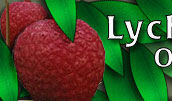|
|
Frost and Freeze Protection for Vegetable Crops Grown in Florida1
By Eric Simonne and George Hochmuth 2
Protecting crops from occasional frost and freezes has been a continual problem for vegetable growers throughout Florida. Several options are available including sprinkler irrigation, soil banking, row covers, raising water table, and cover crops.
Working Definition
Frost and freeze protection consists of various methods to protect plants from damage from freezing temperatures.
Frost and Freeze Protection - Things to Do
- Water freezes at 32° F, while most fleshy plant tissue freezes at lower temperatures (approximately 28° F). Know the temperature threshold below which crop damage will occur.
- The best method of frost-freeze protection is proper site selection. Visualizing the flow of cold air, as if it were water, and its possible buildup in low spots or behind cold air dams is the most effective site selection method. If a site has good cold air drainage, then it is likely a good production site as far as frost-freeze damage is concerned.
- Use soil banking (covering the crop with soil) for crops such as potatoes which have large energy reserves in the seed piece to grow out from the soil covering.
- Early melons, sweet corn, or beans may be planted in a small trench to protect seedlings from frost by the warm surrounding soil mass.
- When possible, use high beds to prevent the crop from being exposed to water logging conditions when overhead irrigation is used for frost protection.
- Row covers (crop covers) can be used for frost and freeze protection. Depending on the thickness of the cover, protection to 25° F is possible.
- Sprinkler irrigation uses the heat released when water changes from liquid to ice to warm the air around the plant leaves. Water must be continuously provided to protect the plant. Enough water must be used to compensate for all heat losses. Sprinkler irrigation is less effective under windy conditions.
- Monitor crop nutritional status after repeated frost protection since mobile nutrients may leach or their oxidation state may have changed.
- Follow weather advisory reports; know air temperature and wind factor when deciding to freeze protect.
Irrigation System Design for Freeze/Frost Protection - Things to Do
- Design the irrigation system for high uniformity of water application. Wind adversely affects the uniformity of water applied through an overhead sprinkler system.
- The sprinkler pattern should overlap the adjacent sprinkler pattern down the laterals and between the laterals about 50% for adequate coverage for winds up to 13 km/hr (8 miles/hr). The spacing of the sprinklers must be closer in the areas where high winds may be frequent.
- Sprinklers should rotate at least one revolution per minute.
- Brass sprinklers should be used since they operate with greater consistency and less susceptibility to stoppage due to freezing.
- Use diesel pumps since electric pumps are prone to power outages.
- Temperature, humidity, and wind velocity affect the rate of water application necessary for cold protection. Water applied at too low a rate can cause more damage than no protection during a freeze. The system must be designed to apply a sufficient rate of water to protect the plant. Table 1
gives guidelines regarding water application rates as related to wind velocity and temperature. Table 2
gives guidelines regarding precipitation rate for selected nozzle capacity and sprinkler spacings. By using Table 1
and Table 2
, you can find the appropriate sprinkler size and spacing for adequate water application for certain climatic conditions.
Things to Avoid: Potential Pitfalls
- Do not run frost/freeze protection when temperatures are so low that water may freeze inside the irrigation system.
- Do not run the injection system intermittently for frost protection.
Other Considerations
- Formation of a "milky-white" ice without icicles and incomplete coverage of the plant indicate too low a rate of water application. Clear ice and icicles are usually an indication of successful cold protection.
- Row covers can also be used to promote early maturity and increase yields of vegetables in cooler production areas.
- Row covers will cost about $750 to $1000 per acre, but most materials can be used for at least two or more seasons.
Additional Readings
Row Covers for Commercial Vegetable Culture in Florida, Circ. 728, Fla. Coop. Ext. Ser., IFAS, Univ. of Fla. http://edis.ifas.ufl.edu/CV201
Row Covers for Growth Enhancement, HS716, Fla. Coop. Ext. Ser., IFAS, Univ. of Fla. http://edis.ifas.ufl.edu/CV106
Cold Protection by Irrigation: Dew Point and Humidity Technology, HS76, Fla. Coop. Ext. Ser., IFAS, Univ. of Fla. http://edis.ifas.ufl.edu/CH054
Uses of Water in Florida Crop Production Systems, Circ. 940, Fla. Coop. Ext. Ser., IFAS, Univ. of Fla. http://edis.ifas.ufl.edu/AE036
Principles and Practices of Irrigation Management for Vegetables, AE260, Fla. Coop. Ext. Ser., IFAS, Univ. of Fla. http://edis.ifas.ufl.edu/CV107
Sprinkler Irrigation for Cold Protection, Circ. 348, Fla. Coop. Ext. Ser., IFAS, Univ. of Fla.
Tables
Table 1. Application rate recommended for cold protection under different wind and temperature conditions.1
|
Expected Minimum Temperature
|
Wind Speed (MPH)
|
|
0 to 1
|
2 to 4
|
5 to 8
|
|
Application rate (inches/hour)
|
|
27 F
|
0.10
|
0.10
|
0.10
|
|
26 F
|
0.10
|
0.10
|
0.14
|
|
24 F
|
0.10
|
0.16
|
0.30
|
|
22 F
|
0.12
|
0.24
|
0.50
|
|
20 F
|
0.16
|
0.30
|
0.60
|
|
18 F
|
0.20
|
0.40
|
0.70
|
|
15 F
|
0.26
|
0.50
|
0.90
|
|
1Ext. Circular 287, Florida Agricultural Extension Service, by Gerber and Martsolf
|
Table 2. Precipitation rate for selected nozzle capacity and sprinkler spacings.
|
Sprinkler Spacing (ft.)
|
Gallons Per Minute/Sprinkler
|
|
2
|
3
|
4
|
5
|
6
|
8
|
10
|
12
|
15
|
|
30 x 30
|
.21
|
.32
|
|
|
|
|
|
|
|
|
30 x 40
|
.16
|
.24
|
.32
|
|
|
|
|
|
|
|
40 x 40
|
|
.18
|
.24
|
.30
|
|
|
|
|
|
|
40 x 50
|
|
.14
|
.29
|
.24
|
.29
|
|
|
|
|
|
50 x 50
|
|
.12
|
.16
|
.19
|
.24
|
.32
|
|
|
|
|
50 x 60
|
|
|
.13
|
.16
|
.19
|
.26
|
.32
|
|
|
|
60 x 60
|
|
|
|
.13
|
.16
|
.21
|
.27
|
.32
|
|
|
60 x 70
|
|
|
|
|
.14
|
.18
|
.23
|
.28
|
.34
|
Footnotes
1.
This document is HS911, one of a series of the Horticultural Sciences Department, Florida Cooperative Extension Service, Institute of Food and Agricultural Sciences, University of Florida. Publication date: January 2003. Please visit the EDIS Web site at http://edis.ifas.ufl.edu.
2.
Eric Simonne, assistant professor, George Hochmuth, center director, NFREC-Quincy, Horticultural Sciences Department, Cooperative Extension Service, Institute of Food and Agricultural Sciences, University of Florida, Gainesville, 32611.
This publication is one of a series entitled Fertilizer and Irrigation Management in the BMP Era. This series is divided into nine principles described in the Introduction Chapter (HOS-897). This publication is part of Principle 5, "Irrigation Amount Must Reflect Crop Water Use ... No More, No Less." BMP implementation requires a global approach to production management. However, for presentation purposes, each aspect of vegetable production is described in a separate publication.
The Institute of Food and Agricultural Sciences is an equal opportunity/affirmative
action employer authorized to provide research, educational information and other
services only to individuals and institutions that function without regard to race
color, sex, age, handicap, or national origin. For information on obtaining other
extension publications, contact your county Cooperative Extension Service office.
Florida Cooperative Extension Service / Institute of Food and Agricultural Sciences /
University of Florida / Christine Taylor Waddill, Dean
Copyright Information
This document is copyrighted by the University of Florida, Institute of Food and Agricultural
Sciences (UF/IFAS) for the people of the State of Florida. UF/IFAS retains all rights under all conventions,
but permits free reproduction by all agents and offices of the Cooperative Extension Service and the
people of the State of Florida. Permission is granted to others to use these materials in part or in full
for educational purposes, provided that full credit is given to the UF/IFAS, citing
the publication, its source, and date of publication.
|
|
|
Copyright © 1999-2010 Lychees Online
info@lycheesonline.com www.lycheesonline.com (954)648-6020
| |

